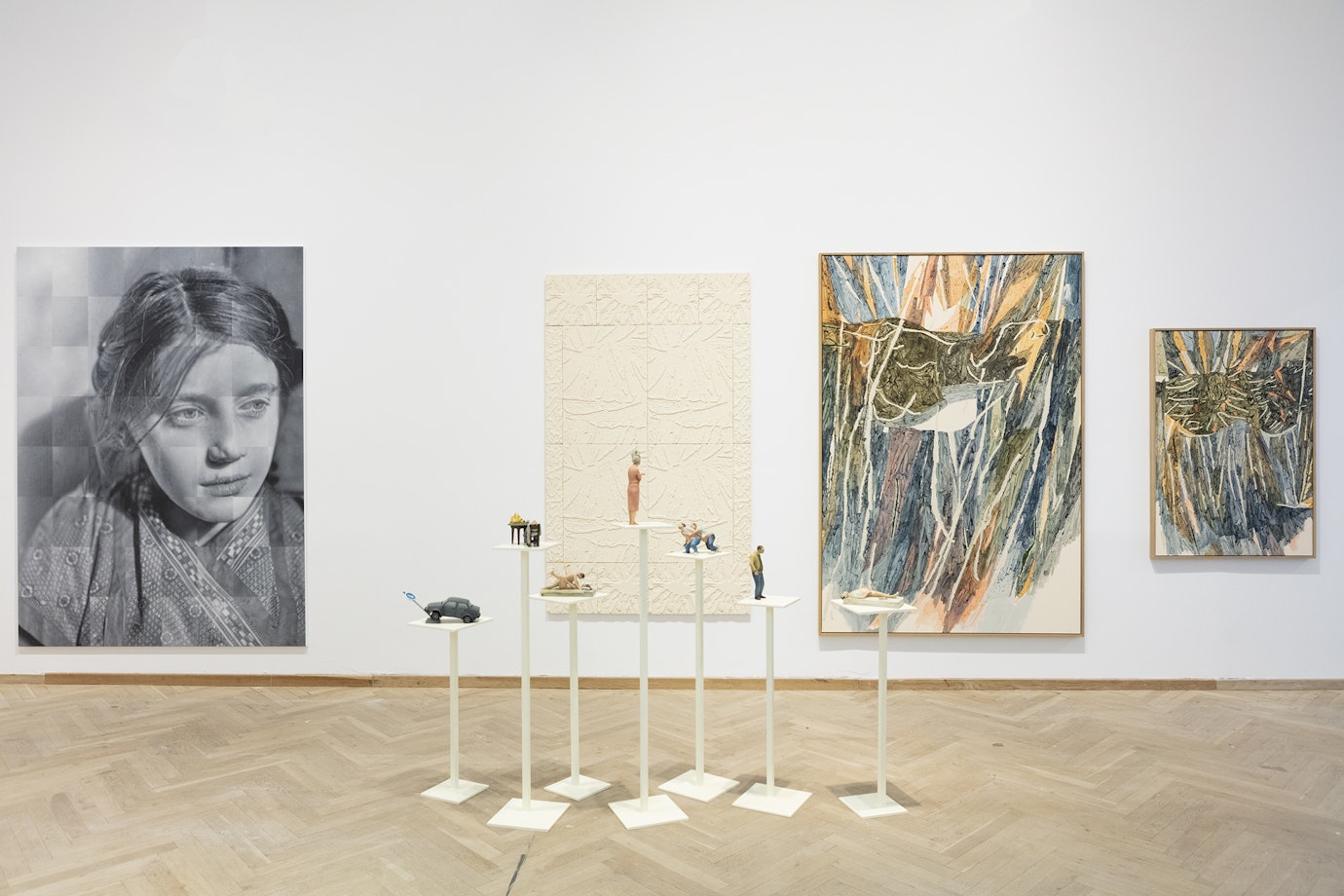- Galleri Cora Hillebrand, Fabriksgatan 48, Göteborg
- Onsdagar13.00–16.00 (endast bokade)
- Lördag-Söndag12.00–16.00
- 073-67 25 627cora@hillebrand.se
- Pågående utställning
- Tidigare utställningar
- I samarbete med Brewing
The death-drive - Tomas Lundgren, Henrik Ekesiöö och Fredrik Åkum
2021.08.27 - 2021.08.29
The death-drive, originally discovered by Sabina Spielrein, and further developed by Freud in Beyond the pleasure principle, is what pushes us to unconsciously pursue our own death. It manifests itself in the compulsion to repeat and re-enact traumatic experiences. We tend to repeat what we don’t understand, what we have suppressed or haven’t worked through. The drive becomes a driver. In Tomas Lundgren’s paintings which deconstruct and reconstruct found materials, we seem to assist to a memory without subject, a headless desire, paradoxically depicted in all kinds of heads, which wishes to return to an earlier state of things, dead matter or past events. This is the death-drive as the haunting of life, or to use a Derridean neologism, a ‘hauntology’ to shake the ontology with which death gets paired. In Lindgren’s hauntologic images, past and present become one and the same. Repeated and transformed. Since repetition always produces differences. This phenomenon is also perceptible in Fredrik Åkum’s obsessive copying of his own paintings, which in the end annihilate the difference between copy and origin.
The paradox of repetition is that when repeated, trauma starts counting less than the repetition. Repetition can therefore bring consolation or protection from the real, death itself, which gets kept at a distance by the power of symbolisation. Artists have always known that. That’s why they are so fascinated by the battles between the two basic instincts of human experience, Eros and Thanatos, love and hate, which according to Freud are intrinsically intertwined and coming from the same source of energy. If love is what makes death acceptable, art is what transgresses and finally defeats it. Through the prism of art, our biggest sufferings become comprehensible and even enjoyable.
The flip side of destruction is creation, but even art can sometimes embrace the death-drive through iconoclastic (Banksy) or obsessive-compulsive gestures (Warhol). The death-drive can take us to places where we don’t want to go or make us do things we couldn't even imagine. If the death-drive is self-destructive, it can lead to the abolishing of the self, addictions, suicide and states of deep melancholia. In Henrik Ekesiöö colourful, tragicomical and highly narrative sculptures of people that have been central in his life, he seizes the death-drive in its most auto-erotic form, and by “auto-eroticism” I mean that there is always an evident enjoyment in self-destruction, by depicting people in odd situations who seem to both suffer from and highly enjoying theirs symptoms. Where ultimate death destroys, the drive preserves. For death-drives can both repeat and clear the paths. Both conserve and search for an absolute zero-point where life can start anew, like Fredrik Åkum’s semi-abstract spring flowers growing out of the frozen winter grounds waiting for the summer rain.
Text by: Sinziana Ravini
Galleriet vill tack Göteborgs stad för Projektstödet!
